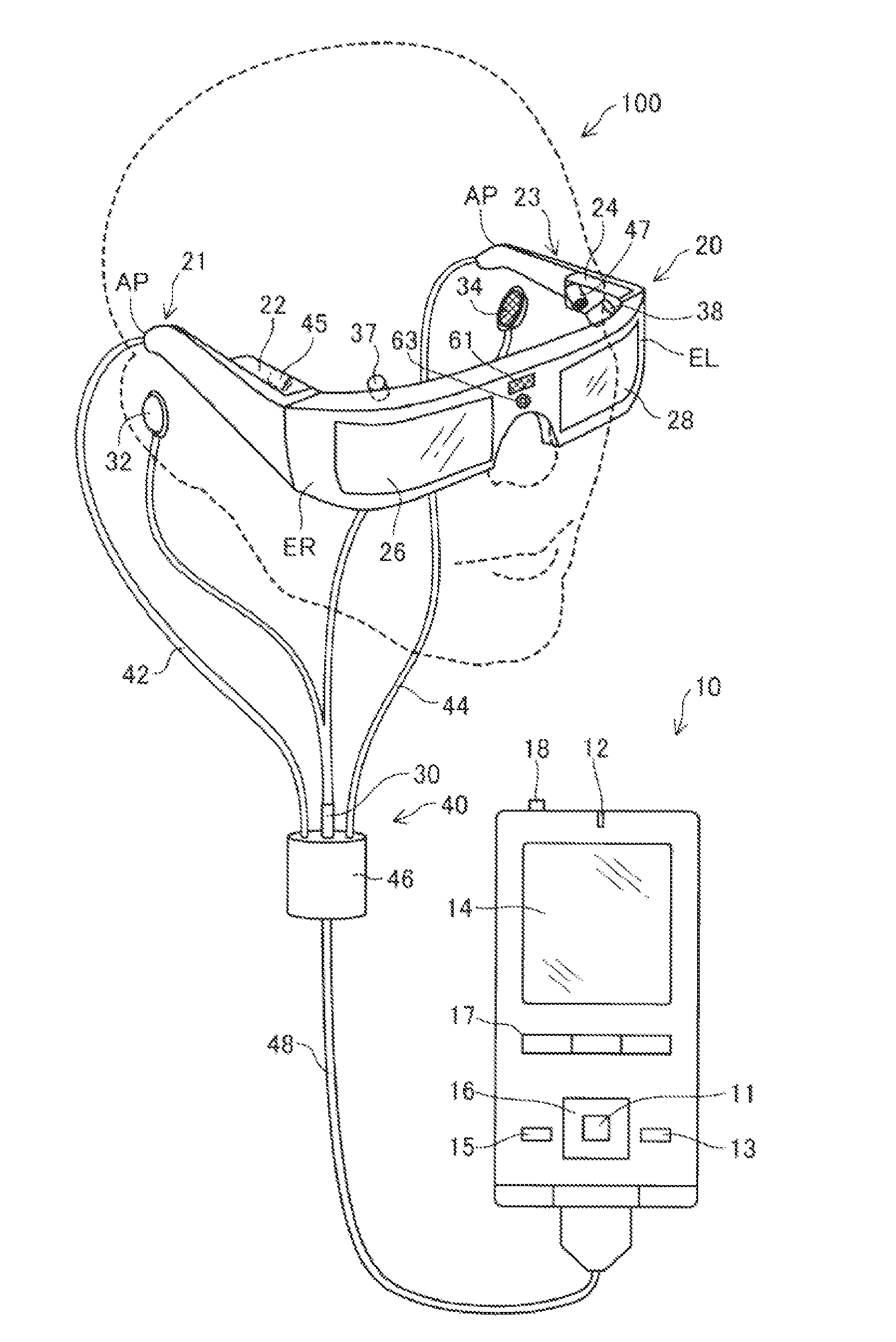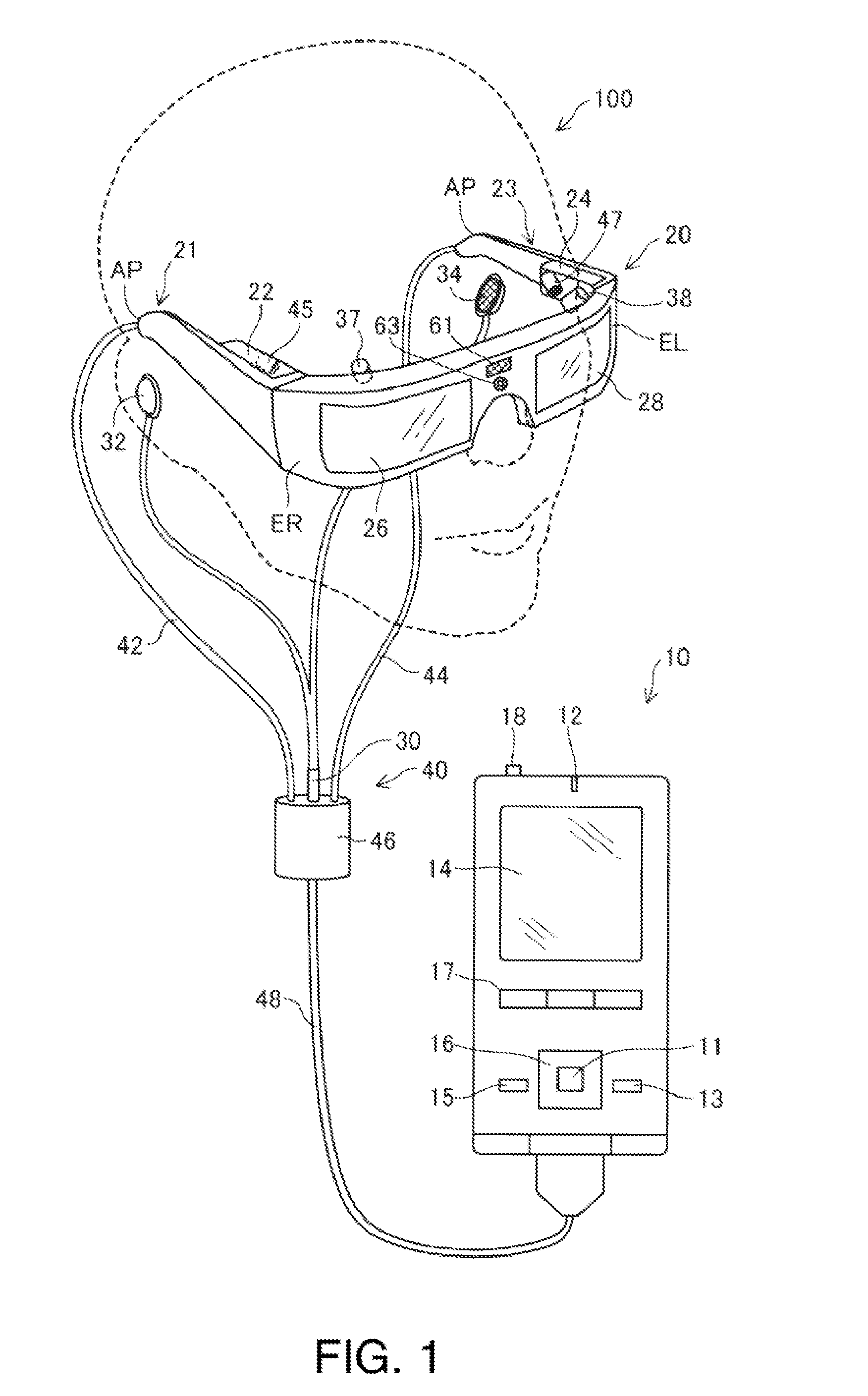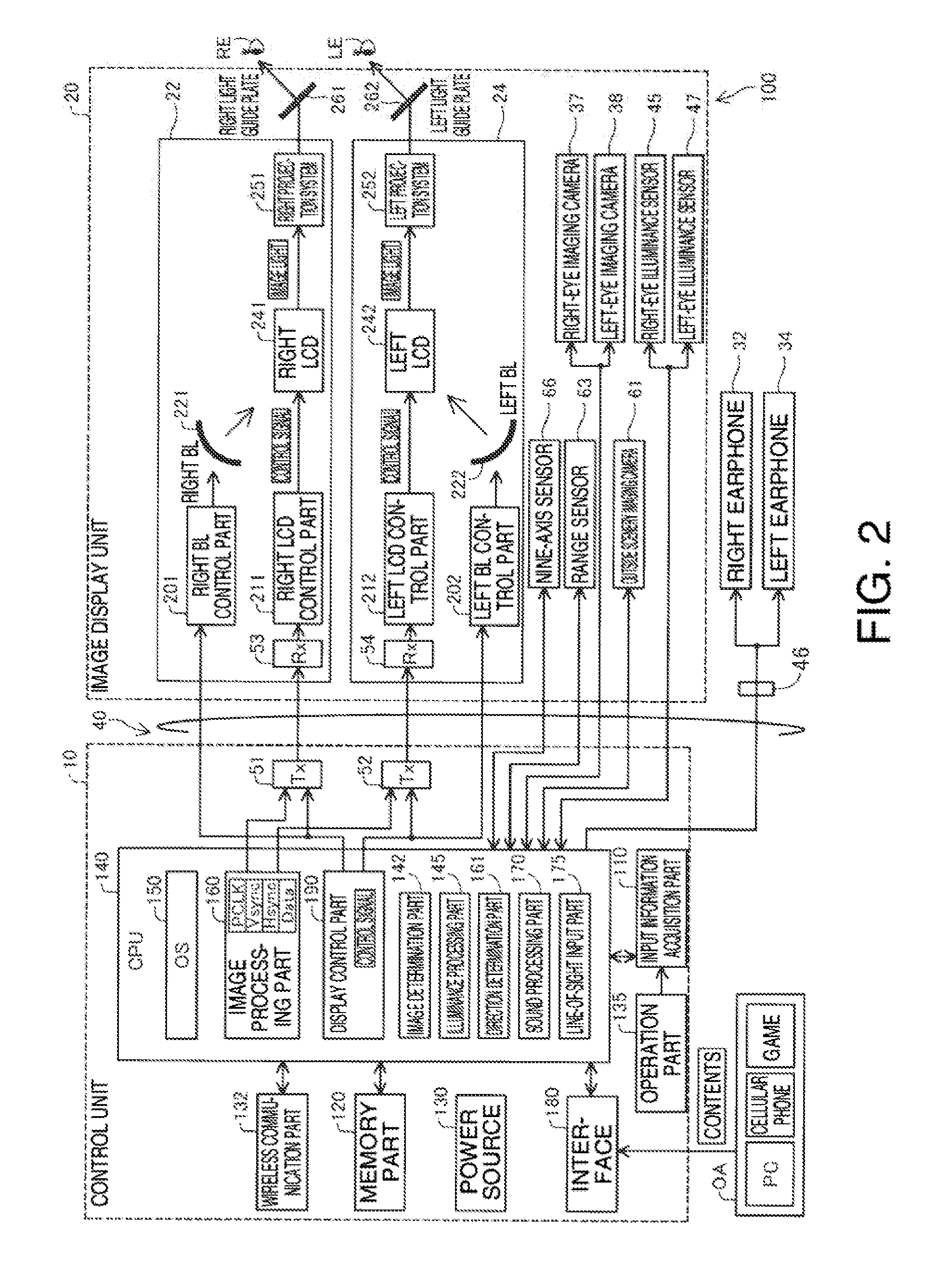Head-mounted display device and method of controlling head-mounted display device
a display device and display device technology, applied in static indicating devices, instruments, optical elements, etc., can solve the problems of difficult operation by eye movement, inability for users to visually recognize images,
- Summary
- Abstract
- Description
- Claims
- Application Information
AI Technical Summary
Benefits of technology
Problems solved by technology
Method used
Image
Examples
first embodiment
A. FIRST EMBODIMENT
A-1. Configuration of Head-Mounted Display Device
[0079]FIG. 1 is an explanatory diagram showing an outer configuration of a head-mounted display device 100. The head-mounted display device 100 is a display device worn on a head and also called a head-mounted display (HMD). The head-mounted display device 100 of the embodiment is an optically-transmissive head-mounted display device that enables visual recognition of a virtual image and direct visual recognition of outside scenery. Note that, in the specification, the virtual image visually recognized by the user using the head-mounted display device 100 is also referred to as “displayed image” for convenience. Further, output of image light generated based on image data is also referred to as “display of an image”.
[0080]The head-mounted display device 100 includes an image display unit 20 that is worn on a head of a user and allows the user to visually recognize a virtual image, and a control unit 10 (controller 1...
second embodiment
B. SECOND EMBODIMENT
[0126]FIG. 8 is an explanatory diagram showing an outer configuration of a head-mounted display device 100a in the second embodiment. In the second embodiment, compared to the first embodiment, the shape of an outside scenery imaging camera 61a is different and a track pad 36 is formed in an image display unit 20a. The outside scenery imaging camera 61a in the second embodiment is a monocular camera, however, may be a stereo camera. The angle of view of the outside scenery imaging camera 61a used in the second embodiment is 40 degrees respectively in the vertical directions and 60 degrees respectively in the horizontal directions from the start point of the optical axis.
[0127]The track pad 36 detects finger operation of the user on the operation surface of the track pad 36, and outputs a signal in response to the detection. When the user wears the image display unit 20a on the head, the track pad 36 is located on the surface opposite to the temporal part of the u...
third embodiment
C. THIRD EMBODIMENT
[0152]The third embodiment is different from the above described embodiments in the method of specifying the line-of-sight direction. When fixating a point of fixation as a specific point, the user does not fixate actually only one point of the point of fixation, but fixates a predetermined range around the point of fixation. As described above, the fine wobbling of eyes that involuntarily and constantly occurs even when a human intends to fixate a point of fixation is called involuntary eye movement. In the third embodiment, in the involuntary eye movement, the line-of-sight directions are specified based on the distances of the eye wobbling from the point of fixation within a predetermined time, the frequency specification of the eye wobbling, or the like.
[0153]In the third embodiment, the image determination part 142 specifies the line-of-sight direction of the user and determines whether or not the user fixates the point of fixation by analyzing the eye wobbli...
PUM
 Login to View More
Login to View More Abstract
Description
Claims
Application Information
 Login to View More
Login to View More - R&D
- Intellectual Property
- Life Sciences
- Materials
- Tech Scout
- Unparalleled Data Quality
- Higher Quality Content
- 60% Fewer Hallucinations
Browse by: Latest US Patents, China's latest patents, Technical Efficacy Thesaurus, Application Domain, Technology Topic, Popular Technical Reports.
© 2025 PatSnap. All rights reserved.Legal|Privacy policy|Modern Slavery Act Transparency Statement|Sitemap|About US| Contact US: help@patsnap.com



